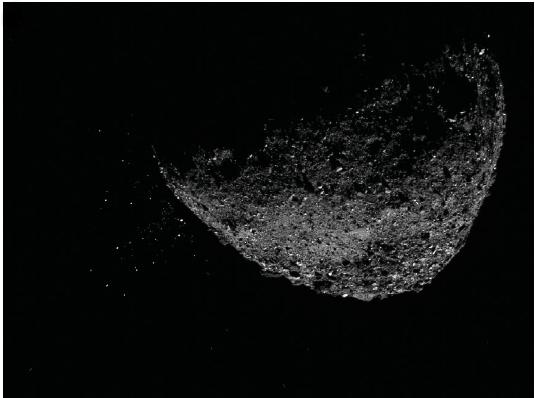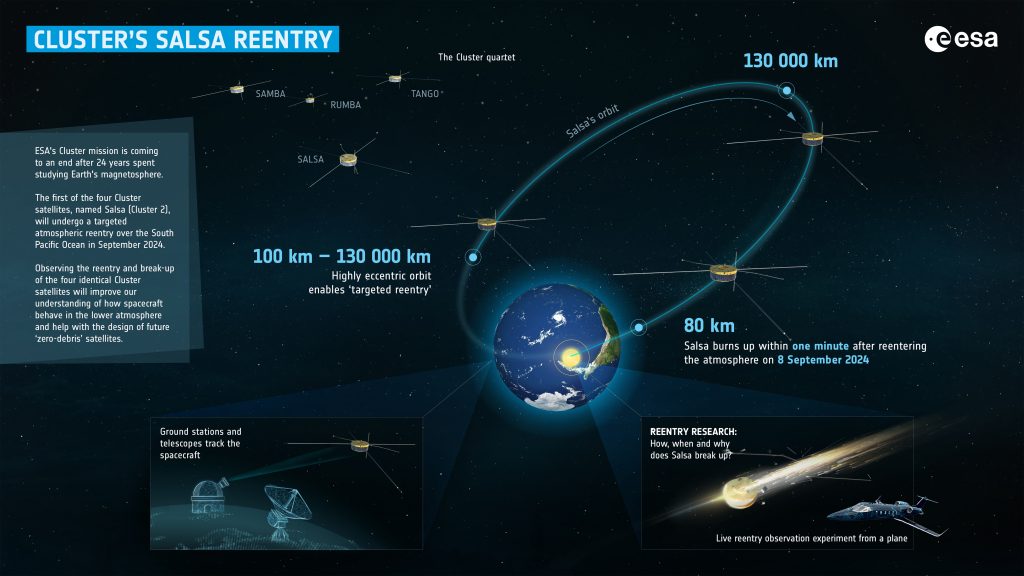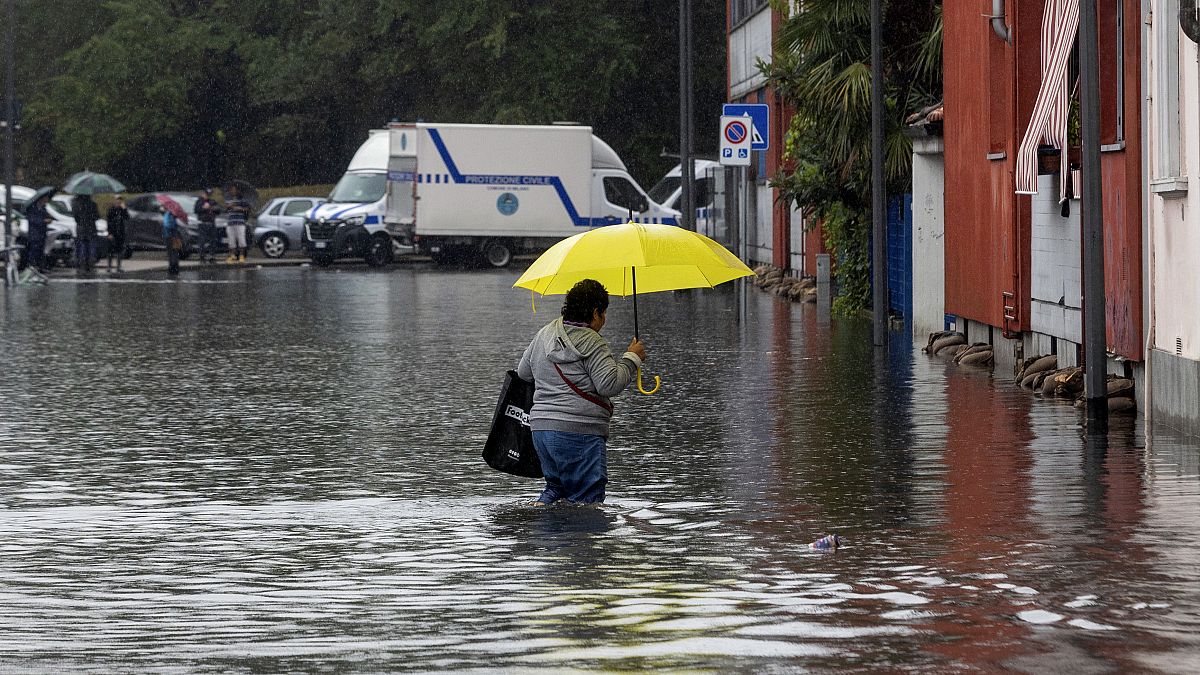Seven suns in China two suns in Argentina, Plasma cascade or plasma rain in the sun. Minnesota skies turn orange
You are using an out of date browser. It may not display this or other websites correctly.
You should upgrade or use an alternative browser.
You should upgrade or use an alternative browser.
Watch the skies and land and oceans
- Thread starter Ellipse
- Start date
Out of the blue, a newly discovered minor asteroid (designated CAQTDL2, around 1.5 meters) may impact Earth over the Western Pacific near the Philippines.
 The International Astronomy Centre (IAC) in Abu Dhabi has announced the discovery of a minor asteroid, provisionally designated CAQTDL2. Initial calculations indicate that the asteroid will collide with Earth today, Wednesday, September 4, 2024, at 16:49 GMT (with an error of plus or minus 15 minutes), in an area north of the Philippines.
The International Astronomy Centre (IAC) in Abu Dhabi has announced the discovery of a minor asteroid, provisionally designated CAQTDL2. Initial calculations indicate that the asteroid will collide with Earth today, Wednesday, September 4, 2024, at 16:49 GMT (with an error of plus or minus 15 minutes), in an area north of the Philippines.
It will subsequently traverse the sky of the Arab region before colliding with Earth, specifically from the east of the Arab region from the UAE, Oman and the eastern Arabian Gulf.
Engineer Mohammed Shawkat Odeh, Director of the International Astronomy Centre, stated that the asteroid was recently monitored at 6:00 am GMT by an observatory with a diameter of 1.5 meters situated in the state of Arizona in the United States. At the time of observation, the asteroid exhibited a magnitude of 21.
Furthermore, the observations conducted on the asteroid over the past few hours, amounting to 23 in total, have revealed that its diameter is approximately 1.6 metres. Consequently, it can be concluded that the asteroid does not present a danger to Earth. It is probable that the asteroid will disintegrate and cease to exist upon entering the Earth's atmosphere, with only minor components reaching the planet, which will not pose a threat, Odeh added.
He further explained that the astronomical calculations have demonstrated that the asteroid will exhibit a brightness of approximately magnitude 15 at that juncture, rendering it discernible solely through intermediate telescopes and in a completely dark environment.

 www.jpl.nasa.gov
(2024 QE2) Sept. 4, 2024
www.jpl.nasa.gov
(2024 QE2) Sept. 4, 2024
(2024 RB) Sept. 4, 2024
(2024 QU) Sept. 4, 2024
(2024 RF) Sept. 6, 2024
(2022 SR) Sept. 7, 2024
Small asteroid will hit the Earth today afternoon, says Abu Dhabi centre
It will subsequently traverse the sky of the Arab region before colliding with Earth, specifically from the east of the Arab region from the UAE, Oman and the eastern Arabian Gulf.
gulftoday.ae
It will subsequently traverse the sky of the Arab region before colliding with Earth, specifically from the east of the Arab region from the UAE, Oman and the eastern Arabian Gulf.
Engineer Mohammed Shawkat Odeh, Director of the International Astronomy Centre, stated that the asteroid was recently monitored at 6:00 am GMT by an observatory with a diameter of 1.5 meters situated in the state of Arizona in the United States. At the time of observation, the asteroid exhibited a magnitude of 21.
Furthermore, the observations conducted on the asteroid over the past few hours, amounting to 23 in total, have revealed that its diameter is approximately 1.6 metres. Consequently, it can be concluded that the asteroid does not present a danger to Earth. It is probable that the asteroid will disintegrate and cease to exist upon entering the Earth's atmosphere, with only minor components reaching the planet, which will not pose a threat, Odeh added.
He further explained that the astronomical calculations have demonstrated that the asteroid will exhibit a brightness of approximately magnitude 15 at that juncture, rendering it discernible solely through intermediate telescopes and in a completely dark environment.

Next Five Asteroid Approaches
NASA's Jet Propulsion Laboratory, the leading center for robotic exploration of the solar system.
(2024 RB) Sept. 4, 2024
(2024 QU) Sept. 4, 2024
(2024 RF) Sept. 6, 2024
(2022 SR) Sept. 7, 2024
This is getting strange, as recent news from ESA has indicated that Salsa’s reentrys on 8 September 2024 may have some smaller debris associated with its plunge toward Earth.
 blogs.esa.int
On 8 September 2024, Salsa (Cluster 2), one of four satellites that make up ESA’s Cluster mission, will reenter Earth’s atmosphere over the South Pacific Ocean Uninhabited Area.
blogs.esa.int
On 8 September 2024, Salsa (Cluster 2), one of four satellites that make up ESA’s Cluster mission, will reenter Earth’s atmosphere over the South Pacific Ocean Uninhabited Area.
Salsa’s orbit takes the satellite quite far out during each of its 2.5-day orbits. As it moves away from Earth to its apogee (farthest point) at around 130 000 km and then comes in close again, it moves in a similar fashion to near-Earth objects like asteroids in the vicinity of our planet.

Its asteroid-like behaviour makes observing the satellite to determine its precise location and trajectory the ultimate job for our in-house asteroid hunters within ESA’s planetary defence team.
You might wonder, can’t you point the radio antenna to the satellite and simply measure where it is?
The answer is yes, for now. Through ESA’s Estrack ground stations, the flight control team are in contact with the satellite on a regular basis. They use a special radio tone that is echoed by the spacecraft to determine how far away it is, while the Doppler variation on the radio signal is used to determine its speed. This data is called radiometry. However, it is getting increasingly difficult for Salsa to keep the power on and use its radio.
As the reentry comes closer and the spacecraft dips deeper and deeper into the atmosphere with each perigee (closest point), it might stop responding before the day of the reentry. If it’s still possible, Salsa’s final radiometry measurements will come in during its last ground station pass with Kourou ground station, about two hours before its reentry.

The National Space Facilities Control and Test Center of the State Space Agency of Ukraine caught Salsa streaking across the skies in May. Credit: NSFCTC of the SSAU.
To complement Salsa’s radiometry, multiple telescopes are observing the spacecraft during its last weeks, reducing the uncertainty of its precise moment of reentry. It’s not easy catching an asteroid or a satellite in the small field of view of a telescope and pointing it correctly can be extremely challenging. If the object, in this case Salsa, is close to its perigee, it appears very bright in the sky, but it zaps by extremely fast. Once it is far out and closer to its apogee, it moves much slower, but is more faintly visible against a backdrop of stars.

Salsa passing through the centre as observed by ESA’s Optical Ground Telescope on 3 September 2024.
Near-Earth object telescopes that usually detect asteroids are now supporting Cluster observations, including ESA’s Optical Ground Station, located in Tenerife (Spain), ESA’s Test-Bed Telescopes and the Schmidt telescope at the Calar Alto Observatory.
Cluster is also the subject of a monitoring campaign by the Inter-Agency Space Debris Coordination Committee (IADC), asking international partners to support the monitoring of the satellite reentry and share data.
Shortly before and during the actual reentry at 80 km altitude, the satellite will be out of range of Kourou ground station and too low over the South Pacific Ocean for a land-based observatory to track it any longer.
And yet, we’re attempting to still have our eyes on Salsa even then. A plane full of scientists and their instruments will perform an airborne observation experiment, hoping to catch rare data on the precise break-up process of a satellite during reentry. Salsa’s telemetry and the observations until the reentry are combined with the expert skill of our flight dynamicists to pinpoint where they need to be flying to be safe, yet as close as possible.
Leading up to and during Salsa’s reentry we are providing updates via the Rocket Science blog, and the @ESA_Cluster, @esaoperations and @esascience X accounts.
More on Salsa’s reentry
Salsa reentry FAQs
More on the Cluster mission
Observing Salsa as it moves around Earth like an asteroid – Rocket Science
News from the edge of gravity
Salsa’s orbit takes the satellite quite far out during each of its 2.5-day orbits. As it moves away from Earth to its apogee (farthest point) at around 130 000 km and then comes in close again, it moves in a similar fashion to near-Earth objects like asteroids in the vicinity of our planet.

Its asteroid-like behaviour makes observing the satellite to determine its precise location and trajectory the ultimate job for our in-house asteroid hunters within ESA’s planetary defence team.
You might wonder, can’t you point the radio antenna to the satellite and simply measure where it is?
The answer is yes, for now. Through ESA’s Estrack ground stations, the flight control team are in contact with the satellite on a regular basis. They use a special radio tone that is echoed by the spacecraft to determine how far away it is, while the Doppler variation on the radio signal is used to determine its speed. This data is called radiometry. However, it is getting increasingly difficult for Salsa to keep the power on and use its radio.
As the reentry comes closer and the spacecraft dips deeper and deeper into the atmosphere with each perigee (closest point), it might stop responding before the day of the reentry. If it’s still possible, Salsa’s final radiometry measurements will come in during its last ground station pass with Kourou ground station, about two hours before its reentry.

The National Space Facilities Control and Test Center of the State Space Agency of Ukraine caught Salsa streaking across the skies in May. Credit: NSFCTC of the SSAU.
To complement Salsa’s radiometry, multiple telescopes are observing the spacecraft during its last weeks, reducing the uncertainty of its precise moment of reentry. It’s not easy catching an asteroid or a satellite in the small field of view of a telescope and pointing it correctly can be extremely challenging. If the object, in this case Salsa, is close to its perigee, it appears very bright in the sky, but it zaps by extremely fast. Once it is far out and closer to its apogee, it moves much slower, but is more faintly visible against a backdrop of stars.
Salsa passing through the centre as observed by ESA’s Optical Ground Telescope on 3 September 2024.
Near-Earth object telescopes that usually detect asteroids are now supporting Cluster observations, including ESA’s Optical Ground Station, located in Tenerife (Spain), ESA’s Test-Bed Telescopes and the Schmidt telescope at the Calar Alto Observatory.
Cluster is also the subject of a monitoring campaign by the Inter-Agency Space Debris Coordination Committee (IADC), asking international partners to support the monitoring of the satellite reentry and share data.
Shortly before and during the actual reentry at 80 km altitude, the satellite will be out of range of Kourou ground station and too low over the South Pacific Ocean for a land-based observatory to track it any longer.
And yet, we’re attempting to still have our eyes on Salsa even then. A plane full of scientists and their instruments will perform an airborne observation experiment, hoping to catch rare data on the precise break-up process of a satellite during reentry. Salsa’s telemetry and the observations until the reentry are combined with the expert skill of our flight dynamicists to pinpoint where they need to be flying to be safe, yet as close as possible.
Leading up to and during Salsa’s reentry we are providing updates via the Rocket Science blog, and the @ESA_Cluster, @esaoperations and @esascience X accounts.
More on Salsa’s reentry
Salsa reentry FAQs
More on the Cluster mission
Arrived!The International Astronomy Centre (IAC) in Abu Dhabi has announced the discovery of a minor asteroid, provisionally designated CAQTDL2. Initial calculations indicate that the asteroid will collide with Earth today, Wednesday, September 4, 2024, at 16:49 GMT (with an error of plus or minus 15 minutes), in an area north of the Philippines.
2024 RW1 had previously been referred to as CAQTDL2
Floods in the Sahel and Sahara
(translated from French)
Massive flooding has been reported in recent days throughout the Sahel and Sahara. A very heavy rainy season this year has followed a particularly long and intense hot season.
In Niger, all the country's major towns are now affected, with houses collapsed, roads and bridges cut off, and people and livestock in distress. There are countless flooded gardens. Even the deserted north of the country is posting images of desolation on social networks. The situation is much the same in Bamako, Gao, Segou, N'Djamena and around Lake Chad. In all, these climatic events have claimed tens of thousands of victims over hundreds of episodes.
This time of year is often critical, as it corresponds to the peak of the rainy season, which swells temporary rivers and streams.
But according to the French online newspaper Reporterre, the amount of rain recorded at the beginning of September 2024 in the Sahara bears witness to a rare meteorological event. "More than 500% of normal monthly rainfall in September is expected to fall during this episode, which could last for a fortnight. Very locally, this total will even be 1,000% higher than normal".
The Sahara, the driest region on the planet, experiences a significant rainfall episode once every ten years on average. However, this is the highest level of rainfall recorded since records began in 1994. "This phenomenon is attributable to the fact that, since June, the so-called intertropical convergence zone - a warm and humid band of the atmosphere - has been located much further north than usual, for unknown reasons".

Inondations dans le Sahel et le Sahara
Des inondations monstre sont rapportées depuis quelques jours partout au Sahel, ainsi que dans le Sahara. Une saison des pluies très abondante a fait suite, cette année, à une saison chaude particulièrement longue et intense. Au Niger, toutes les grandes villes du pays sont désormais...
 mondafrique.com
mondafrique.com
Heavy flood due to torrential rainstorm in Marseille of Provence-Alpes-Côte d'Azur region, France
Super typhoon Yagi cloud bands affecting Hong Kong airport.
September 5, 2024
Strong storms today in Italy
Impressive downburst in Bari, Italy today September 5.
Epic flooding in West Tampa.. Town and Country, Florida. @FOXWeatherDesk @wxchanneldesk @JimCantore @NWSTampaBay
Yeah, there's only a couple of items here so far that really 'stand out' as anomalous or interesting at this point. The rest of them are standard Earth Changes stuff.This is an interesting idea, I wonder if you could somehow feed your timeline with what is published in the Earth Changes section of SOTT, I agree that the monthly video compilation can't capture everything, but the exercise of observation is kind of already being done in SOTT, so it may be a matter of filtering through some of the results.
I've to adjust yeah.Yeah, there's only a couple of items here so far that really 'stand out' as anomalous or interesting at this point. The rest of them are standard Earth Changes stuff.
Rainfall ravages northern Italy
A wave of violent rainstorms has hit parts of northern Italy, flooding the financial centre of Milan and raising fears for the life of a man who was swept away by a flood in the Piedmont region.
Two other northern regions, Lombardy and Veneto, were hit by widespread flooding, which caused damage and disruption in Milan, where the Seveso and Lambro rivers overflowed their banks.
Some metro services had to be suspended due to flooding.
For the first time since it was founded in 1976, Milan's Radio Popolare stopped broadcasting because its broadcasting centre was flooded.

De fortes précipitations ravagent le nord de l'Italie
Les scientifiques avertissent que la crise climatique augmente la fréquence des phénomènes météorologiques extrêmes, tels que les vagues de chaleur, les sécheresses, les tempêtes et les inondations en Europe et dans le monde entier. #EuropeNews
US : "Big Cold Front Coming This Weekend"


 www.allsides.com
www.allsides.com

"Big Cold Front Coming This Weekend"
"Big Cold Front Coming This Weekend" A cold front is set to sweep across the eastern half of the US, a reminder that planet Earth is not on fire as...
EU : Abrupt change expected with the first polar flow of the season coming
Autumn has decided to make its presence felt: the heat will finally give way to very cool, even cold, temperatures for the season.
Under the effect of a branch of the jet stream, these winds aloft will, with the help of a vast low-pressure complex located from Iceland to the British Isles, cause a mass of polar air laden with moisture to stall.
A sudden change
With temperatures reaching 35 degrees in Ecija, in Spain's Autonomous Community of Andalusia, 31 degrees in Corsica, and 27 degrees in Kleine-Brogel, in Belgium's Flemish Region, the weather is about to turn autumnal.
From this weekend onwards, a block of polar air will be moving into Western Europe. Overall, temperatures will be 5 to 10 degrees below seasonal normals.

Coup de frais - Première coulée polaire de la saison ?
L’automne a décidé de signaler sa présence : la chaleur va finalement céder sa place à des températures bien fraîches, voire froides pour la saison.
